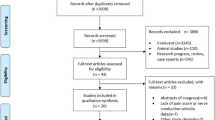Abstract
Objective
We previously designed and reported a simple new method (the cold-loaded pain sensation test) for quantitative evaluation of the function of small nerve fibers. In the study reported here, we investigated the clinical usefulness of this test to evaluate diabetic neuropathy by comparison with a device for quantitative measurement of the neuroselective current perception threshold (CPT).
Patients and methods
We evaluated 68 diabetic patients without cerebrovascular disease. After cooling the test site, the recovery time (RT) required for pain sensation to return to an equivalent level to that on the noncooled side was evaluated. The rapid screening mode was employed to measure CPT.
Results
RT measured at the great toe (77.8 ± 43.2 s) was significantly longer than that measured at the medial malleolus (53.8 ± 30.0 s) (p < 0.01). Although the A delta-CPT level measured at the medial malleolus was not correlated with that of the great toe (r = 0.23, p = 0.06), the C-fiber (C)-CPT level measured at the medial malleolus was positively correlated with that of the great toe (r = 0.60, p < 0.01). In addition, the A delta-CPT level was positively correlated with the RT at the great toe (r = 0.52, p < 0.01). When multiple regression analysis was done using the A delta-CPT or C-CPT level as the dependent variable, and with RT at the great toe and medial malleolus, age, diabetes duration, and glycated hemoglobin (HbA1c) as explanatory variables, RT at the great toe was a determinant of the A delta-CPT or C-CPT level at the great toe.
Conclusion
Findings in this study suggest that impairment of small nerve fibers is more severe distally in patients with diabetic neuropathy. In addition, the validity of the cold-loaded pain-sensation test to evaluate small-nerve-fiber impairment was demonstrated.



Similar content being viewed by others
References
Service FJ, Rizza RA, Daube JR, et al. Near normoglycaemia improved nerve conduction and vibration sensation in diabetic neuropathy. Diabetologia. 1985;28:722–7.
Vinik AI, Erbas T, Stansberry KB, et al. Small fiber neuropathy and neurovascular disturbances in diabetes mellitus. Exp Clin Endocrinol Diabetes. 2001;109:451–73.
Ohta Akio, Obi Ryusei, Kawata Takehiro, et al. The cold-loaded pain sensation test in the diagnosis of diabetic neuropathy. Jpn J Clin Physiol. 2006;36:47–55.
Japanese Study Group on Diabetic Neuropathy. Simplified diagnostic criteria for diabetic polyneuropathy. Peripheral Nerve. 2001; 12: 225–7 (in Japanese).
Katims JJ. Electrodiagnostic functional sensory evaluation of the patient with pain: A review of the neuroselective current perception threshold (CPT) and pain tolerance threshold (PTT). Pain Digest. 1998;8:219–30.
Oka H, Mochio S, Matsushima M. Evaluation of thermal sensation by a new heat flux technique. Jpn J Clin Neurophysiol. 2001;29:254–61.
Hensel H. Thermoreception and temperature regulation (ed by Hill, DK). Academic Press: London, 1981; p. 18–63.
Ernst E, Fialka V. Ice freezes pain? A review of the clinical effectiveness of analgesic cold therapy. J Pain Symptom Manage. 1994;9:56–9.
Katims JJ, Long DM, Ng LKY. Transcutaneous nerve stimulation. Frequency and waveform specificity in humans. Appl Neurophysiol. 1986;49:86–91.
Oishi M, Mochizuki Y, Katsuhiko O, et al. Current perception threshold and sympathetic skin response in diabetic and alcoholic polyneuropathies. Intern Med. 2002;41:819–22.
Masson EA, Boulton AJM. The neurometer: validation and comparison with conventional tests for diabetic neuropathy. Diabetic Med. 1991;8:s63–6.
Suzuki K, Chung Y, Kobayashi Y, et al. Current perception thresholds: a new method for assessment of peripheral sensory neuropathy in diabetes mellitus. Peripheral Nerve. 1995;6:59–63.
Katims JJ, Richter R, Rowland F. A comparison of nerve conduction velocities and current perception threshold as correlates of clinical severity of diabetic sensory neuropathy. J Neurol Neurosurg Psychiatry. 1989;52:502–11.
Putz Z, Tabák AG, Tóth N, et al. Noninvasive evaluation of neural impairment in subjects with impaired glucose tolerance. Diabetes Care. 2009;32:181–3.
Pitei DL, Watkins PJ, Stevens MJ, et al. The value of the neurometer in assessing diabetic neuropathy by measurement of the current perception threshold. Diabetic Med. 1994;11:872–6.
Umapathi T, Tan WL, Loke SC, et al. Intraepidermal nerve fiber density as a marker of early diabetic neuropathy. Muscle Nerve. 2007;35:591–8.
Fagius J. Aspects of autonomic neurophysiology in diabetic polyneuropathy: a brief review. Diabet Med. 1991;8:s58–62.
Acknowledgments
No sources of funding were used to assist in the preparation of this manuscript
Conflict of interest
None
Author information
Authors and Affiliations
Corresponding author
About this article
Cite this article
Ohta, A., Kato, H., Nakamura, Y. et al. Cold-loaded pain sensation test and current perception threshold for evaluating diabetic neuropathy. Diabetol Int 4, 34–39 (2013). https://doi.org/10.1007/s13340-012-0090-y
Received:
Accepted:
Published:
Issue Date:
DOI: https://doi.org/10.1007/s13340-012-0090-y




